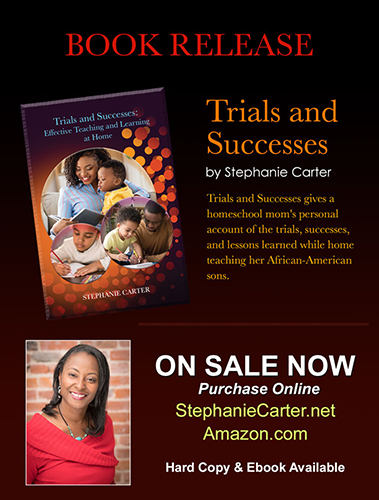As we closeout 2020 and during our favorite time of the year, the holidays, we are all in need of rest, relaxation, and rejuvenation. A break is well deserved for parents, especially our children, and the teachers. Who would have thought last year this time, that as parents we would be adding teacher to our title and many hats that they already wear? It has been a lot, but we’ve made it. When school started back in August and September, many of us thought that the kids would be back in school, at least on a hybrid schedule. But due to COVID-19 and the rising cases still surging, most children are still at home virtually learning. Stephanie Carter mom of two teenage boys, is a maven when it comes to homeschooling, and has been home teaching her children for quite some time. Carter is who most of us need for guidance of the do’s and the don’ts of effective home teaching, especially those of us with degrees in other areas. We are all stressed because there is so much going on at once, and Carter knows exactly what it takes to get the job done and excel in this role, as she has been homeschooling for the past 11 years, and is passionate about empowering other parents to do the same. She recently released her new book, Trials and Successes: Effective Teaching and Learning at Home and shows us exactly how to navigate the virtual learning environment.
What has been your motivation for writing your book Trials & Successes?
My husband, Phillip Carter, brought me to this career path. He had encouraged me to write for years. I had drafts for 4 books on my laptop that I didn’t complete. When the COVID-19 pandemic caused the schools to close, my husband encouraged me to post 10 homeschooling tips for his Facebook friends, who all of a sudden, had to teach their children at home. My post was shared over 100 times and I realized that there was a need. His encouragement inspired me to write and publish, Trials and Successes, and to continue publishing and releasing books that will help others.

What are some tips on preventing burnout for parents who are now doing virtual teaching for the first time?
To prevent burnout, parents and students need to take many breaks. I know that it may be difficult because the classes are structured, but if parents feel that their child’s attention wanes after a period of time, they can talk to the child’s teacher to permit their child to stand move around or sit in a comfortable area within their learning space. At this time, it is important for the child to be comfortable otherwise, the learning process will not be effective.
There is a difference between homeschooling and virtual learning. What are some ways that they are alike so that parents can apply some knowledge from your expertise as a homeschooling mom?
Yes, this is a difference. Virtual learning is when students are physically separate from their teacher or instructor, and homeschooling is when a parent or guardian takes control and manages all aspects of their child’s education. Virtual learning can be used as a tool in homeschooling. I have used virtual learning in the past, and even more now with the pandemic for my sons to learn from individuals who have a passion for subjects such as anatomy and literature. Outschool and Khan Academy are resources I have used for virtual learning. Virtual learning and homeschooling are similar because the parents can control the learning environment of their child, even if the virtual learning is on a strict schedule.
For those who may not have the time to read the book right now and want to get a quick understanding of homeschooling, do you have another point of reference for the information provided in the book?
Yes, I have just completed a quick reference e-book entitled, Quick Reference to Home Teaching Success. It is a 12-page quick read that highlights some of the major points from the Trials and Successes book. This e-book is available on Amazon and on my website.
What are some things that parents can do for their children to ensure that this new way of learning, virtual learning will work for them and their household while still following their school district and or county’s guidance?
Parents should have open communication with their children’s teachers to keep track of their children’s progress. Parents should verify that assignments, if any, are being submitted. If parents are available during their children’s virtual class time, they should observe to determine if their children are attentive, if they’re participating in class, and if they understand what’s being taught. By being proactive, parents will not be surprised at the end of the quarter or the end of the school year if their children are falling behind. It is a tremendous adjustment for all involved and it will take time, patience, and perseverance. But if parents focus on the main goal, which is a successful educational experience, the time and effort in doing whatever it takes to reach that goal will be worth it.
What can we expect next from you? Are there any other projects in the works?
In addition to the e-book I mentioned earlier in the interview, I’ve completed the first book of an educational series for children, and I’m also working on a book about learning styles. Look for these books to be released in early 2021.
If there was just one thing that you can share with us as the number one tip for homeschooling, what would it be?
My number one tip is to tailor your child’s education to fit YOUR child. Homeschooling your child is making their education as unique as your child. Each child learns differently, learns at their own pace, and has their own interests and gifts, and discovering these attributes will allow your child room to learn and grow.
How can we stay connected to you?
You can reach me on LinkedIn and through my website.
All images by Imagine Photography, Washington DC


















Add Comment